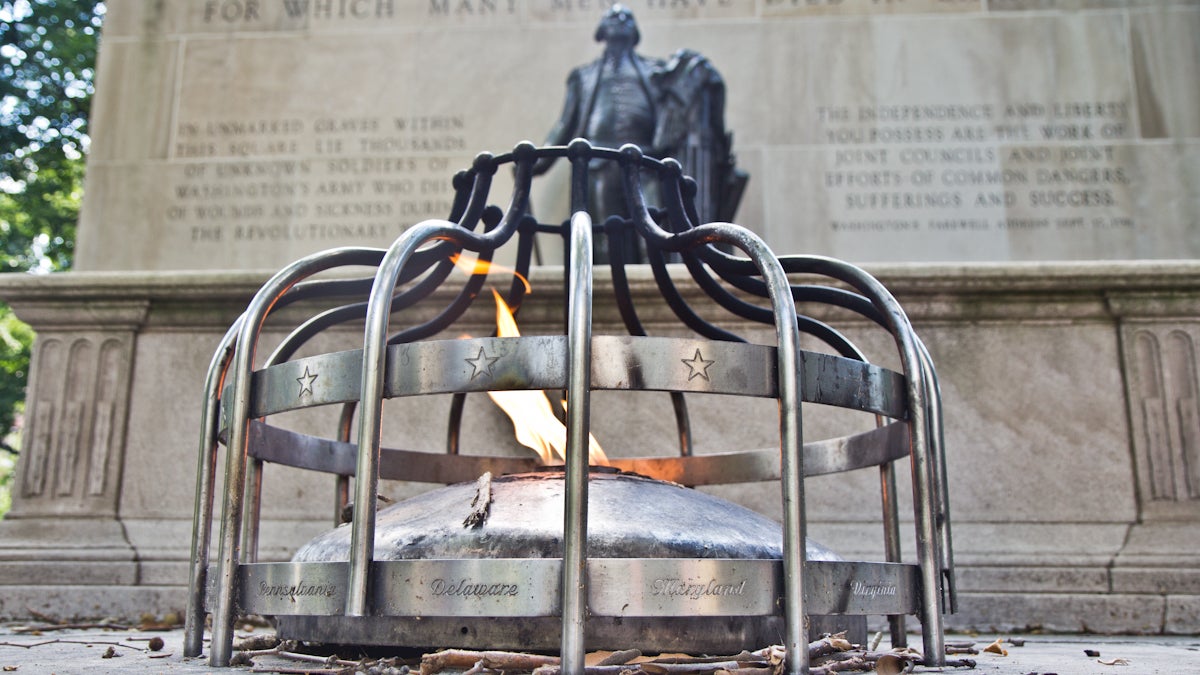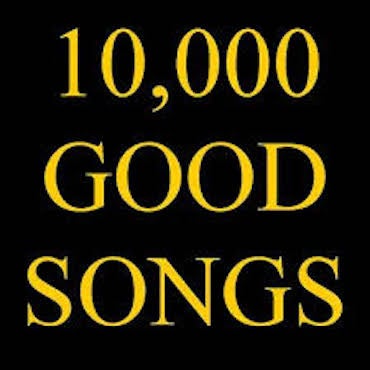While looking up at the fireworks, remember the heroes beneath our feet

'Freedom is a light for which many have died in darkness.' A monument dedicated to the warriors of the American Revolution stands in Washington Square in Philadelphia. (Kimberly Paynter/WHYY)
On Independence Day, Philadelphians and tourists will flock to Independence Hall and the Liberty Bell, to gaze in awe at fireworks and to attend Wawa’s Welcome America celebration, the largest free concert in the country. But few, if any, will realize that the true heroes of the American Revolution lie right under their feet.
Growing up in Philly, I crossed Washington Square Park hundreds of times, unaware that I was walking on a mass grave site. However, there was always something sad and lonely about the square, in spite of the dog walkers, children on tricycles, and couples on benches. Then, one day, I stopped to read the inscription above the statue of George Washington: “Freedom is a light for which many have died in darkness.” I read on in horror.
“In unmarked graves within this square lie thousands of unknown soldiers of Washington’s Army who died of wounds and sickness during the Revolutionary War.”
The park was created by William Penn as Southeastern Square in 1682. In 1776, over 2,500 fallen troops were buried here in an open pit, one coffin on top of the other. Without names.
Later, it became a burial ground for African-American victims of yellow fever and a place to graze animals. James Madison had described it as “… a drab and melancholy place.”
Renamed Washington Square in 1895, it was converted into a public park and beautified with over 60 varieties of trees. However, it wasn’t until 1954 that a monument with a bronze statue of Washington and an eternal flame identified the Square as the resting place of thousands of soldiers. Known as the Tomb of the Unknown Revolutionary War Soldier, the monument contains the remains of just one soldier. Ironically, it is not known which side the soldier was on — British or Colonial. There is no record of how many bodies remain buried in the park or surrounding area. In 2005, the National Park Service took over the Square and it is now part of Independence National Historic Park.
When the war started, there were half a million slaves in the colonies. At least 7,000 African-Americans fought for the Continental Army in exchange for their freedom (a promise broken by many slave owners). Native Americans, however, participated on both sides. Some fought for the British, because a continued British presence might have restrained the colonists’ westward expansion into Native American lands. Others sided with the revolutionaries. The war was mostly a disaster for Native Americans, whichever side they fought on. So it is possible that both African-Americans and Native Americans are among the unknown soldiers buried in Washington Square.
One of the biggest losses of the Continental Army, the Battle of Germantown, resulted in the deaths of over 700 of Washington’s troops and the capture of 400. Many captured soldiers died in prison. It is likely that they, too, are among the nameless dead of Washington Square.
The average age of soldiers in Washington’s Army was between 20 and 25, the same as Americans whose bodies are now shipped back in coffins from Iraq and Afghanistan. While many claim they do not know what we are fighting for now, there can be no doubt what the young men who lie beneath Washington Square Park fought for in 1776. They fought for their freedom, without king or queen, in a tolerant, just society.
Although this solemn burial ground is in the shadow of Independence Hall, I wonder how many visitors come to pay their respects. How many workers use it as a shortcut to their offices every day without ever thinking of the sacrifices made by those who lie under their feet? And do residents of the St. James, the Square’s newest, luxury skyscraper, know that they’re looking down on an historic cemetery?
This holiday weekend, oceans of beer will be consumed. Mountains of burgers will be grilled. Flags will bloom at national cemeteries. Wreaths will be presented at Arlington and the Tomb of the Unknown Soldier. But who will honor for the warriors of Washington Square Park?
Perhaps there will be a small ceremony conducted by the Philadelphia Chapter of the Sons of the American Revolution. Or better yet, maybe just one child will point to the Eternal Flame and ask, “What is that?” And a parent will patiently explain the true meaning of the Fourth of July.
WHYY is your source for fact-based, in-depth journalism and information. As a nonprofit organization, we rely on financial support from readers like you. Please give today.

